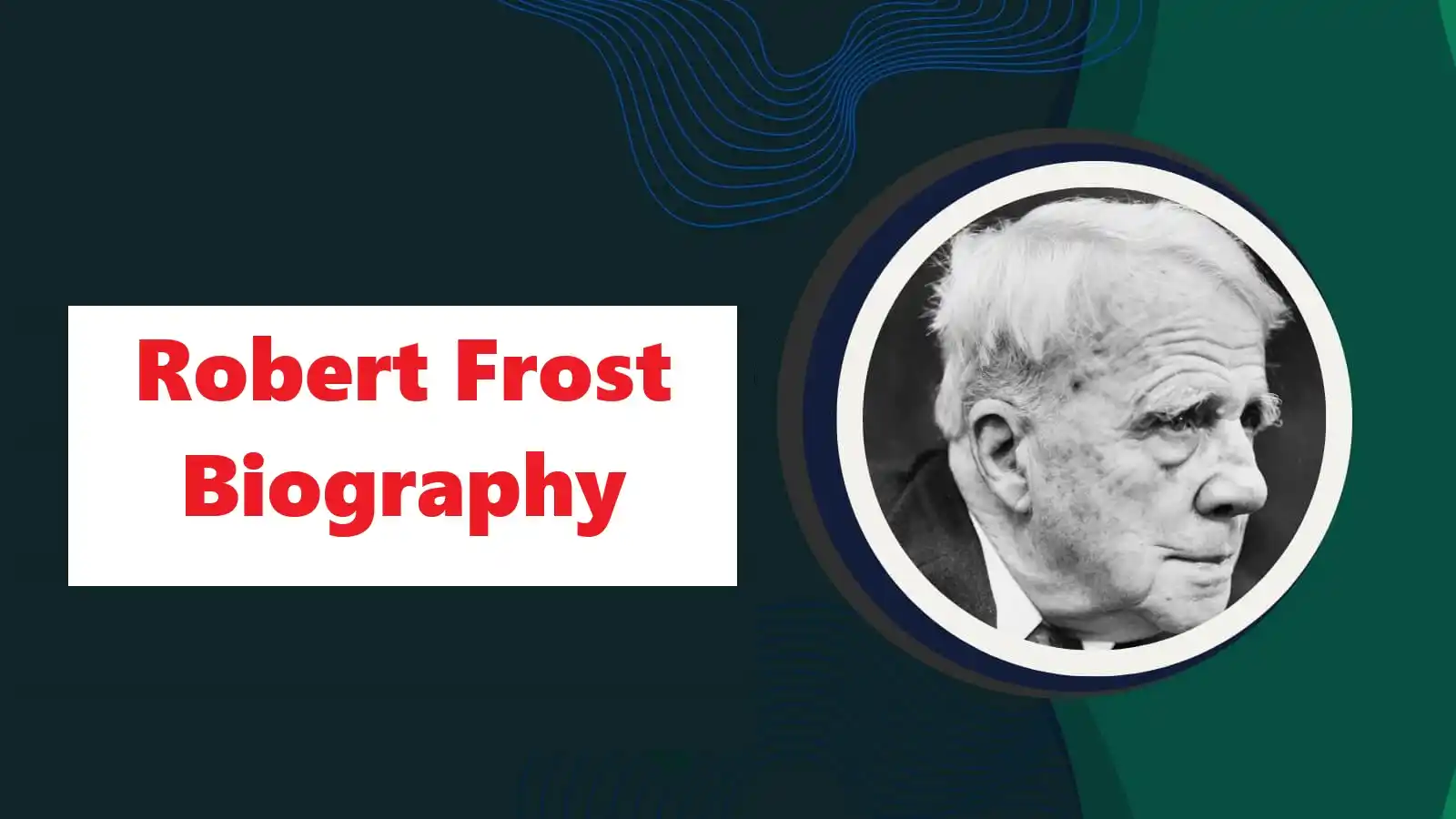Robert Frost Biography: Life, Poetry, and Legacy
Robert Frost Biography: A Journey Through His Life and Legacy
Early Life of Robert Frost: A Glimpse into the Poet’s Childhood and Education
Robert Lee Frost was born on March 26, 1874, in San Francisco, California. After the death of his father in 1885, his family moved to Lawrence, Massachusetts, where he developed an interest in poetry. He attended Dartmouth College but left before completing his degree. Later, he briefly attended Harvard University but did not graduate. Despite this, Frost’s self-education and deep literary exploration shaped his poetic career.
Robert Frost: An Author’s Journey from Obscurity to Literary Fame
In the early 1900s, Frost struggled to gain recognition. He worked as a teacher and farmer while writing poetry. In 1912, he moved to England, where he published his first two poetry collections, A Boy’s Will (1913) and North of Boston (1914). These works introduced his signature style—simple language with deep meaning—and gained critical acclaim. Upon returning to the United States, Frost’s reputation flourished, leading to multiple Pulitzer Prizes and international recognition.
Uncovering the Lifetime Achievements of Poet Robert Frost
Frost’s poetry often explored themes of nature, rural life, and human choices. Some of his most celebrated works include:
- “The Road Not Taken” – A reflection on life’s decisions and their consequences.
- “Stopping by Woods on a Snowy Evening” – A contemplation of duty and rest.
- “Mending Wall” – A meditation on boundaries and human relationships.
Frost received four Pulitzer Prizes for Poetry and was awarded the Congressional Gold Medal in 1960. His influence on American literature remains unparalleled.
Robert Frost: A Brief Biography in 100 Words
Robert Frost (1874–1963) was a celebrated American poet known for his profound depictions of rural life and human nature. Born in San Francisco, he later moved to Massachusetts, where he nurtured his love for poetry. His early struggles led him to England, where he published his first poetry collections. Returning to America, he gained immense fame with works like The Road Not Taken and Stopping by Woods on a Snowy Evening. Frost won four Pulitzer Prizes and left an indelible mark on literature. His poetry continues to inspire readers worldwide.
Resources
Conclusion
Robert Frost’s poetry remains a cornerstone of American literature. His ability to capture profound themes in simple words ensures his legacy endures. By embracing nature, choice, and human emotion, Frost’s poetry continues to inspire generations.
Our National Flag Paragraph
Our national flag, known as the Tiranga, is a symbol of pride and unity for India. It has three horizontal stripes of saffron, white, and green, with a navy blue Ashoka Chakra in the center. Saffron represents courage and sacrifice, white symbolizes peace and truth, while green stands for growth and prosperity. The Ashoka Chakra, with its 24 spokes, signifies justice and progress. The sacrifices made for our country’s freedom remind us of our national flag. People hoist it with great respect on national occasions, reflecting the strength and unity of our diverse nation.






[…] Robert Frost Biography […]